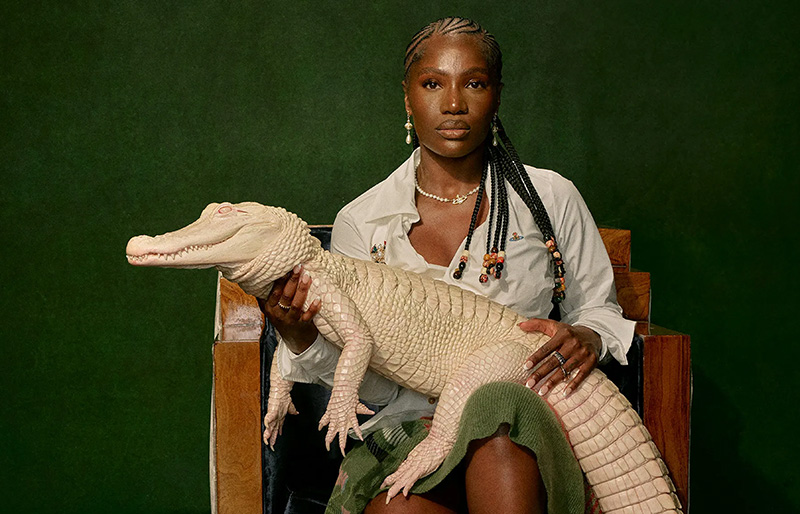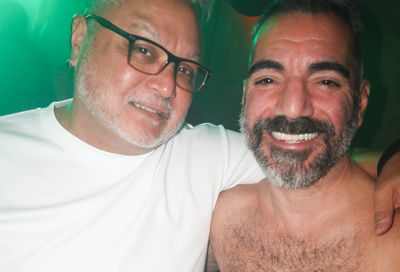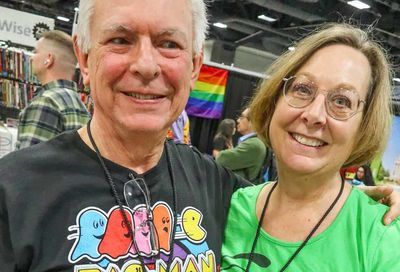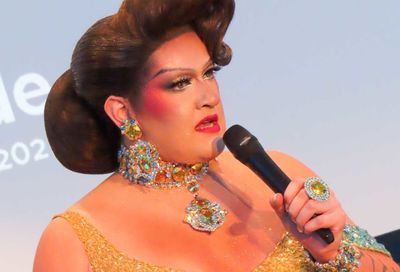Small Business Boosters: D.C.’s Main Streets
D.C.'s Main Streets program has proven an effective ally for helping entrepreneurs set up shop

For Alex Padro, the upside-down “L”-shaped portion running north from 1800 block of 7th Street NW, then east down the 600 block of T Street NW to the Howard Theatre, is the crown jewel of the Shaw neighborhood and a prime example of what revitalizing an area can do.
“If I had to pick a block where everything’s gone right, that would be the block,” he says.
Padro, the executive director of Shaw Main Streets, says all but two spaces on that strip of real estate have been renovated, and recent years have seen the advent of eateries like Uprising Muffin, Eat the Rich, Southern Efficiency and Mockingbird Hill, as well as the revamping of older businesses like Wanda’s on Seventh Salon & Spa, which, after a temporary hiatus, was able to return to the neighborhood in a newly-renovated building on the spot of its original inception. Padro says those two blocks have had the most “dramatic transformation” of any commercial corridor in Shaw Main Streets’ service area.
Founded in 2002, D.C.’s Main Streets program is based on the model developed by the National Main Street Center to assist downtown revitalization efforts in major U.S. cities. The Main Streets program is accredited under the umbrella of the D.C. Department of Small and Local Business Development (DSLBD) that is intended to foster retail investment by providing the support, training and resources needed to help small businesses thrive. Main Streets organizations, which exist in five different cities across the country, largely focus on the revitalization and historic preservation of major commercial corridors, and the promotion of the businesses that settle there.
In the District, there are currently eight recognized Main Streets programs along several major commercial corridors: in addition to Shaw, there’s also Barracks Row, along 8th Street SE; Congress Heights, in Ward 8; Deanwood Heights, in Ward 7; Dupont Circle; H Street NE; the North Capitol Street corridor; and Rhode Island Avenue NE. All Main Streets programs are run by a paid executive director — who helps administer grant money from the city to carry out the organization’s activities — and an all-volunteer support staff.
According to Ted Archer, chief of staff at DSLBD, there have been other Main Streets programs that have since disbanded, either because the people involved wanted to re-evaluate their efforts, or felt that Main Streets “was not the correct revitalization tool for them at that precise time.” According to Padro, some since-disbanded Main Streets programs included one near 14th and U Streets NW, one on Upper 14th Street, and another further up Georgia Avenue NW in what was known as the “Gateway” Main Streets.
Since helping found Shaw Main Streets in 2003, and becoming the nonprofit’s executive director in 2004, Padro, who also serves as an ANC commissioner, has served as a cheerleader and advocate of luring small businesses to set up shop in Shaw, which has several qualities that made it appealing.
“The neighborhood was historically a commercial district, especially along 7th and 9th Streets, the O Street Market, the Howard Theatre, those were all assets that were underperforming, or, in some cases, had been boarded up for decades,” Padro says. “We had a lot of empty lots where significant development could take place. Those were all opportunities to fill the gaps and bring businesses in where none had been in a really long time.”
Padro and Shaw Main Streets set to work, focusing on cleaning up the neighborhood — Main Streets also manages the city’s Clean & Safe program for the Shaw neighborhood, which focuses on trash collection, planting trees, and cleaning up graffiti — as well as providing small businesses with technical assistance or advice for obtaining various building and operating permits, and marketing the neighborhood as a destination, both for residents and visitors to the city. As Shaw increasingly became the latest neighborhood affected by D.C.’s development boom, particularly following the construction of the nearby Convention Center, Shaw Main Streets worked to attract more than 150 new businesses while finding ways to retain existing ones, even as real estate prices and rents in the up-and-coming neighborhood quickly escalated.
“Folks used to have to go to 14th Street or Chinatown to go to the theater, or go to an art gallery, or to go out to dinner. We didn’t have any independent coffee shops, or even a Starbucks,” Padro says of the neighborhood’s change. “It was really all about neighbors working together to try to attract the types of businesses that they wanted to spend their money in, and that they wanted to have jobs in.”
Padro says he would “absolutely” encourage other neighborhoods with major commercial thruways to adopt a Main Streets or other similar program focusing on small business growth and neighborhood revitalization, both externally and financially.
“I would encourage Mayor Bowser to expand the program to other commercial corridors that haven’t made the amount of progress that’s possible with a Main Streets group,” he says.
Of course, Shaw is not the only neighborhood experiencing boom times. Kyle Wood, executive director of Rhode Island Avenue Main Streets, says the program has been successful in helping businesses settle in the Eckington, Brookland and Woodridge neighborhoods. Rhode Island Avenue Main Streets has helped several businesses pay for facade improvements, and has helped others with marketing strategies to promote themselves. While Woodridge, in particular, is still in need of a dry cleaners, a pet food store, and a sit-down restaurant, the eastern end of Rhode Island Avenue has already attracted a coffee shop, a local grocery store, and even an art studio and gallery. There are plans for a new bistro, specializing in Mediterranean food, set to open in the spring of 2015, in the 2200 block of Rhode Island Avenue NE, in the space formerly occupied by Lace Nightclub.
“Businesses are coming to the area because they see interesting things happening here,” Wood says.
Many small business owners assisted by the various Main Streets organizations have nothing but praise for the program.
Philip Sambol, the general manager of Good Food Market, says that the Rhode Island Avenue Main Streets program has been extremely helpful in spreading word about the market, which fills a gap that was created when a former Safeway closed, leaving the Woodridge neighborhood without a viable grocery store. Sambol credits Rhode Island Avenue Main Streets with helping Good Food Market get a sign, make improvements to its exterior facade, and pay for additional security measures.
Meanwhile, across town, Sean Reydi — co-owner of Simon Vintage, a furniture and homegoods store on 9th Street NW — says that Shaw Main Streets most recently helped him and his partner obtain money to secure a sign for their business that cost nearly $7,000. It has previously helped Simon Vintage with its marketing strategy, including obtaining an advertisement on the side of a city bus. Shaw Main Streets has also introduced Reydi and his partner to other businesses so they can offer special discounts or promotions. Reydi also says that Simon Vintage has been able to expand its customer base through events like the Art All Night festival, in which Shaw Main Streets, partnering with the D.C. Commission on the Arts and Humanities, highlights various works of art, which allowed art lovers to stop by the shop and get special discounts.
“From 10 p.m. to 2 a.m., we had a non-stop flow of people,” Reydi says of this year’s festival. He says that when Simon Vintage’s lease is up in a year, he and his partner will have to think very hard about relocating.
“We’ve debated whether we should buy closer to our home neighborhood,” he said. “But one of the detractions is not having a Shaw Main Streets to help us. It makes us think twice about ever moving.”
[goldstar-plugin teritory=8]
Support Metro Weekly’s Journalism
These are challenging times for news organizations. And yet it’s crucial we stay active and provide vital resources and information to both our local readers and the world. So won’t you please take a moment and consider supporting Metro Weekly with a membership? For as little as $5 a month, you can help ensure Metro Weekly magazine and MetroWeekly.com remain free, viable resources as we provide the best, most diverse, culturally-resonant LGBTQ coverage in both the D.C. region and around the world. Memberships come with exclusive perks and discounts, your own personal digital delivery of each week’s magazine (and an archive), access to our Member's Lounge when it launches this fall, and exclusive members-only items like Metro Weekly Membership Mugs and Tote Bags! Check out all our membership levels here and please join us today!

























You must be logged in to post a comment.